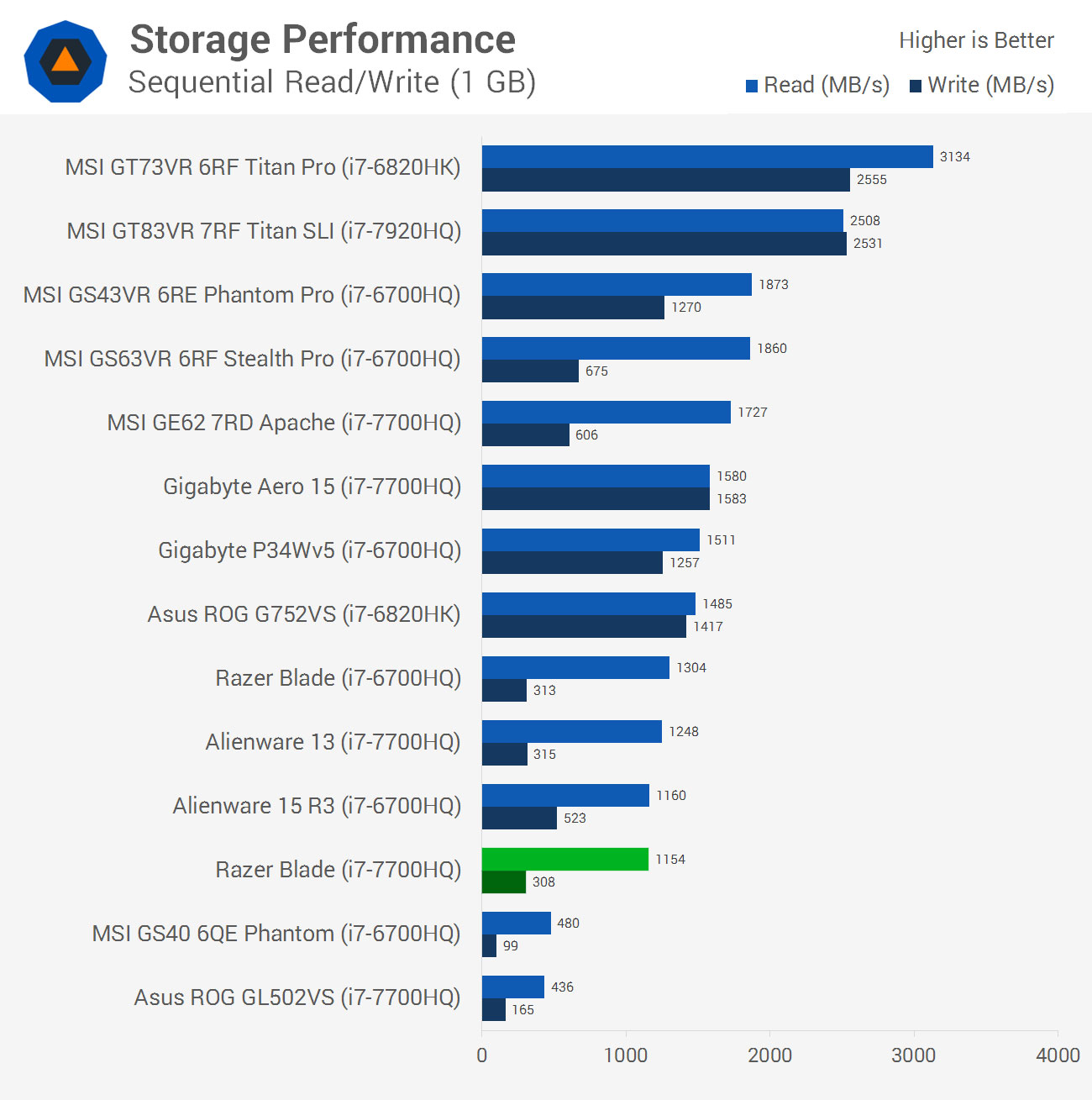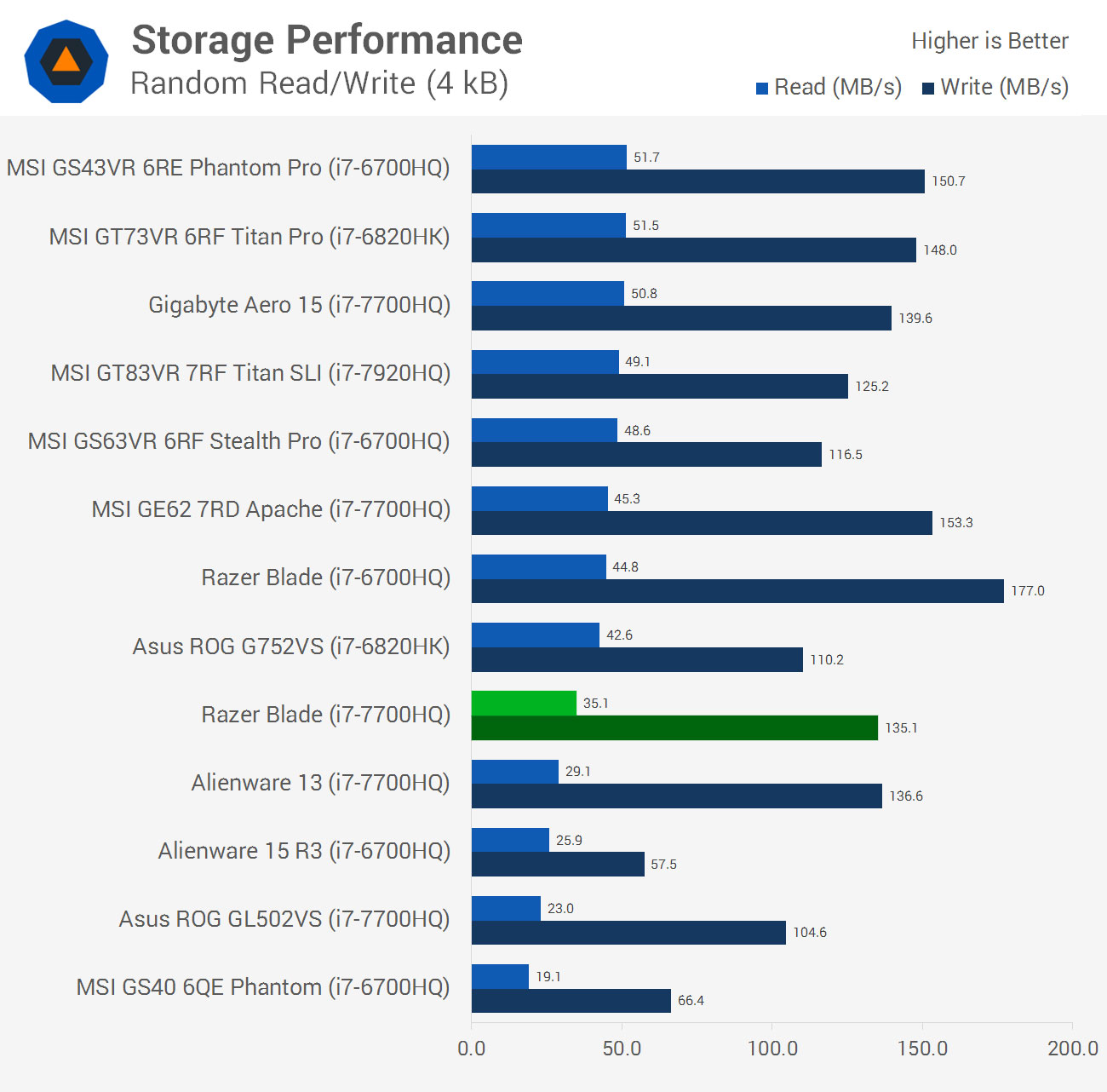Hardware Overview and System Performance
Most of the hardware inside the Razer Blade is standard across all models. This laptop comes with an Intel 'Kaby Lake' Core i7-7700HQ processor, which we've seen before in a wide range of gaming laptops. It has four cores, eight threads clocked at 2.8 GHz with a single-core Turbo boost frequency of 3.8 GHz. The Blade also comes with 16GB of dual-channel DDR4 at 2400 MHz.
The GPU is an Nvidia GeForce GTX 1060 with 6GB of GDDR5 memory. This discrete graphics chip is essentially identical to the desktop equivalent, with 1280 CUDA cores, 80 TMUs, and 48 ROPs. It's clocked at 1404 MHz with a rated boost of 1670 MHz, slightly lower than the desktop GPU. Its 6GB of memory is clocked at 8000 MHz on a 192-bit bus for 192 GB/s of bandwidth.
The main piece of hardware that can be factory configured is the PCIe M.2 SSD storage. There's no spinning disk drive inside the Blade, so you're stuck with whatever SSD capacity you opt for. Razer offers 256GB, 512GB and 1TB options, and I tend to think you'll need at least 512GB in a gaming laptop to store the massive file sizes of today's games. My review unit came with the 256GB SSD, and it was only able to store 2-3 modern titles at a time.
Aside from that you also get a Killer Wireless-AC 1535 solution, which brings support for Wi-Fi 802.11a/b/g/n/ac and Bluetooth 4.1.







The hardware found inside the Razer Blade is no different to many other gaming laptops, which often opt for the i7-7700HQ + GTX 1060 combination. It's therefore no surprise that the Blade performs very similarly to a range of other laptops with this hardware inside.
The Core i7-7700HQ performs within one percent of the Alienware 13, a laptop with near-identical hardware, in a range of system benchmarks. This is within the margin of error, and shows that the hardware in the Razer Blade is working as expected. Those upgrading from a laptop with a Core i7-6700HQ processor inside should see approximately six percent more performance in CPU-limited workloads, while the i7-7700HQ is 15 percent faster than the i7-4710HQ.


My Razer Blade came loaded with a 256GB Samsung PM951 PCIe M.2 SSD, which is another piece of hardware I've seen before in other laptops. The Blade performs well though not chart-toppingly good, with excellent read performance and okay write performance. Again, you'll want 512GB here so you can actually fit a few games on the Blade.
